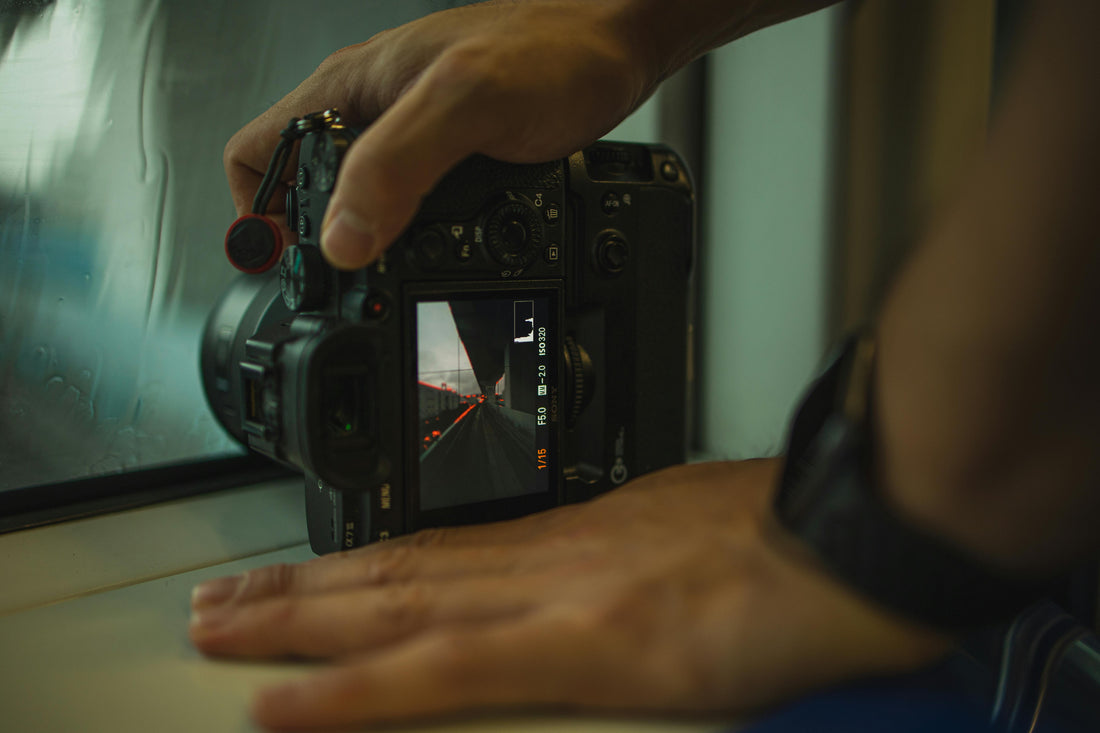
How to Get the Film Look In Camera (Before You Even Touch Retrofi)
Share
If you're chasing the timeless aesthetic of film — the dreamy motion blur, soft rolloff, and subtle grain — it starts long before you load a PowerGrade. At Retrofi, we believe the best film emulation begins before the grade, with how you shoot your footage.
This is the ultimate guide to emulating the film look in camera — using real-world techniques that combine perfectly with Retrofi's handcrafted film emulation PowerGrades for DaVinci Resolve. Follow these steps and you’ll get footage that feels like Kodak 500T, Portra 400, or expired 16mm, all while shooting digitally.
Why In-Camera Settings Matter (Even With Retrofi)
The digital film aesthetic is more than just grain or color curves. It’s a mindset — built around intention, constraints, and physical characteristics of real film. Modern cameras give you flexibility. Film doesn’t. And if you shoot with that analog discipline, your digital footage will grade like butter.
That’s where Retrofi comes in — to take that foundation and elevate it. But first, you have to shoot it right.
1. Lock in 24fps — Always
Real film is 24fps. It’s not just a look — it’s a feeling. Digital video shot at 60fps (or higher) moves too smoothly, breaking the illusion of cinema. If you want that authentic film motion, lock your camera to 24 frames per second and never look back.
This is rule #1 for any Retrofi user. Our film emulation grades are crafted to complement 24fps cadence — just like Kodak 500T or 16mm film would’ve been shot in real life.
2. Set Your Shutter Angle to 180° (Or 1/48–1/50)
Shutter angle is another critical piece of the film puzzle. A 180° shutter gives you the perfect amount of motion blur — just enough to feel natural, not artificial.
If you’re shooting 24fps, that means a shutter speed of 1/48 or 1/50. Many shooters accidentally crank this higher to lower exposure, but all that does is make the footage feel jittery and digital. Instead, keep the 180° locked in — just like you would on a film camera.
Want to darken the image? See the next step.
3. Use ND Filters Like a Cinematographer
Film shooters couldn’t change their ISO mid-roll or bump their shutter to adjust exposure. They used ND filters — and so should you. ND filters allow you to keep your settings locked while still maintaining proper exposure, especially outdoors.
If you’re filming at f/2.8 in daylight, you’ll need a 3-stop or higher ND to preserve shallow depth of field. This not only protects your highlights but also gives that dreamy filmic softness that Retrofi grades were built to work with.
4. Never Use Auto White Balance
There’s no auto white balance on a roll of Kodak. That’s why you should always set white balance manually. For most outdoor scenes, go with 5600K. Indoors under tungsten lighting? 3200K.
Consistency here is key — especially if you're using Retrofi PowerGrades like our 250D or 500T looks, which are tuned to specific color temps. Shifting white balance across clips will throw off the film emulation and require unnecessary correction in post.
5. Underexpose Slightly for a Moodier Film Look
Film — especially expired or pushed film stocks — tends to skew darker. You can mimic this by underexposing by 1/3 to 2/3 stops, especially when shooting for moody tones.
We see incredible results from Retrofi users who deliberately underexpose when shooting scenes they plan to grade with our expired 35mm or 16mm film looks. It creates richer shadows, softer transitions, and lets the grain shine.
Just be cautious not to crush your image entirely — test your camera’s limits first.
6. Use Lenses With Character (or Add Diffusion)
One of the fastest ways to kill the film vibe is using clinical, modern glass. These lenses are sharp and contrasty — and nothing like analog film.
If you want cinematic softness, go vintage:
-
Helios 44-2 for swirly bokeh
-
Canon FD lenses for warmth
-
Contax Zeiss for creamy softness
No vintage glass? Use a diffusion filter. Tools like Tiffen Black Pro Mist, Moment CineBloom, or Retrofi’s upcoming Halation+Bloom diffusion filters reduce sharpness, bloom highlights, and add that classic analog glow.
7. Think Like a Film Shooter: Choose a “Stock” Before You Roll
Great cinematographers don’t just shoot — they shoot with intent. When using Retrofi, we recommend thinking in terms of stock:
-
Bright daylight? Shoot like you’re using Kodak 250D
-
Low light interiors? Frame it like it’s 500T
-
Sunset portrait? Channel your Portra 400
By framing your scenes with a particular Retrofi film emulation PowerGrade in mind, you’ll better match exposure, mood, and composition — and your grade will feel seamless.
8. Frame With Constraints Like You're Shooting on Film
Shooting on film means every shot counts. You’re not rolling for 20 minutes. You’re not reviewing every take on set. You’re not “fixing it in post.”
Try this exercise: pretend you're shooting on a $400 roll of Kodak Vision3. You’ll frame tighter, shoot smarter, and waste less. That constraint-driven mindset leads to intentional footage — the exact kind that Retrofi’s film emulation thrives on.
9. Let the Shadows Breathe
Many digital shooters overexpose or flatten contrast to “play it safe.” But real film? It lives in the shadows. Those rich blacks, those soft roll-offs — that’s where the emotion is.
Retrofi grades like Expired 16mm and AGFA Soft look best when you let the shadows fall. Don’t fight them. Embrace contrast. Protect highlights, expose for skin — but let the darkness in.
10. Combine the Right Technique with the Right Tools
Here’s where everything clicks. If you follow the steps above — 24fps, 180° shutter, ND filters, vintage glass, proper exposure — you’ve already built the foundation of a cinematic, filmic image.
Now all that’s left is the grade.
That’s where Retrofi comes in. Our emulation packs aren’t LUTs. They’re PowerGrades built to mimic the nuance of real film stocks, including:
-
Kodak 500T
-
Kodak 250D
-
Portra 400
-
AGFA Ultra
-
Expired 35mm & 16mm
And we’ve just added a bold Teal & Orange Film Emulation Pack, plus Film Burn Transitions with Built-In SFX, to complete your analog-inspired toolkit.
Final Thoughts: Shoot With Intention. Grade With Retrofi.
Digital doesn’t have to feel digital. If you treat your camera like a film camera — fixed settings, intentional framing, real-world constraints — you can shoot digital footage that carries the weight and warmth of analog.
Then, when it’s time to grade, Retrofi is waiting. Built by filmmakers, for filmmakers — to bridge the gap between modern cameras and vintage film stocks.
